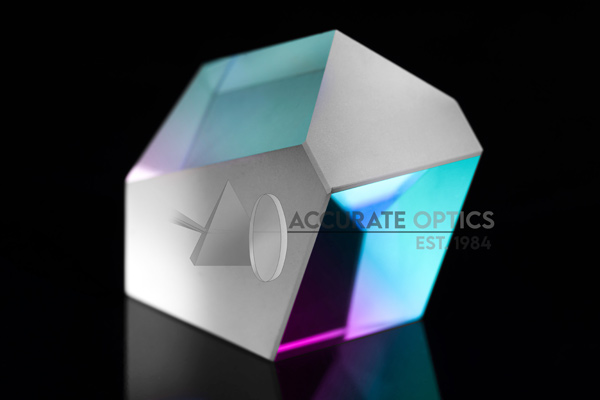Infrared Mirror Technology: Enhancing Sensing and Imaging
In the realm of optical technology, the ability to manipulate and control infrared (IR) light is crucial for a wide range of applications. Infrared mirror technology stands at the forefront of this endeavor, offering sophisticated solutions for reflecting and manipulating IR radiation. In this blog post, we’ll explore the significance of infrared mirror technology, its principles, and its diverse applications across various industries.
Understanding Infrared Mirror Technology
Infrared mirror technology involves the design and fabrication of mirrors specifically engineered to reflect infrared radiation. These mirrors are constructed using materials and coatings optimized for IR wavelengths, allowing for precise control over reflection properties. Infrared mirrors play a crucial role in various applications, including thermal imaging, spectroscopy, laser systems, and aerospace.
Principles of Infrared Mirror Technology
Infrared mirror technology operates on the principles of reflection and wavelength selectivity. The mirror surface and coating materials are carefully selected to have high reflectivity in the infrared spectrum while minimizing absorption and scattering. This enables efficient reflection of IR radiation with minimal loss, ensuring high optical performance in IR applications.
Types of Infrared Mirrors
- Metallic Mirrors: Metallic mirrors, such as those made of aluminum, silver, or gold, are commonly used for infrared reflection. These mirrors offer high reflectivity across a broad range of IR wavelengths and are suitable for applications where high optical performance is required.
- Dielectric Mirrors: Dielectric mirrors consist of multiple layers of dielectric materials deposited on a substrate. These mirrors can be engineered to have high reflectivity in specific IR wavelength ranges while transmitting or absorbing other wavelengths. Dielectric mirrors offer precise control over reflection properties and are widely used in spectroscopy and laser systems.
- Metal-Dielectric Mirrors: Metal-dielectric mirrors combine metallic and dielectric layers to achieve tailored reflection properties. These mirrors can be designed to have enhanced reflectivity in specific IR wavelength bands, making them ideal for applications such as infrared imaging and sensing.
Applications of Infrared Mirror Technology
- Thermal Imaging: In thermal imaging systems, infrared mirrors are used to direct IR radiation onto detectors, allowing for the visualization of temperature variations in objects and environments. These mirrors enable non-contact temperature measurement and are widely used in applications such as surveillance, industrial inspection, and medical diagnostics.
- Spectroscopy: Infrared mirrors play a crucial role in spectroscopic measurements, where they are used to direct IR radiation onto spectrometers or detectors. These mirrors enable accurate characterization of molecular structures, chemical compositions, and material properties in applications such as environmental monitoring, gas sensing, and pharmaceutical analysis.
- Laser Systems: In laser systems, infrared mirrors are employed to direct and manipulate infrared laser beams. These mirrors enable precise beam steering, power control, and beam shaping in applications such as laser cutting, welding, and materials processing.
- Aerospace and Defense: In aerospace and defense applications, infrared mirrors are used in optical systems such as telescopes, sensors, and targeting systems. These mirrors enable long-range surveillance, threat detection, and precision targeting by reflecting IR radiation with high efficiency and accuracy.
Advantages of Infrared Mirror Technology
- High Reflectivity: Infrared mirrors offer high reflectivity in the IR spectrum, enabling efficient reflection of IR radiation with minimal loss.
- Precise Control: Infrared mirrors can be engineered to have tailored reflection properties, allowing for precise control over IR radiation in various applications.
- Versatility: Infrared mirrors are versatile components that find applications in a wide range of industries, including thermal imaging, spectroscopy, laser systems, and aerospace.
- Reliability: Infrared mirrors are designed and fabricated to withstand harsh environmental conditions and maintain optical performance over time, ensuring long-term reliability in demanding applications.
Conclusion
Infrared mirror technology plays a crucial role in enabling precise control and manipulation of infrared radiation across various industries. With their high reflectivity, precise control, versatility, and reliability, infrared mirrors are indispensable components in thermal imaging, spectroscopy, laser systems, aerospace, and defense. As technology continues to advance, the demand for high-performance infrared mirrors will only grow, driving innovation and pushing the boundaries of what’s possible in optical technology. With their expertise and advanced capabilities, manufacturers of infrared mirrors are poised to remain at the forefront of this specialized field, unlocking new possibilities in sensing, imaging, and beyond.
Important FAQs:
1. What is infrared mirror technology?
Infrared mirror technology involves the use of specialized mirrors to manipulate and direct infrared light in various applications.
2. How does infrared mirror technology enhance sensing and imaging?
It improves sensitivity and resolution in infrared sensing and imaging systems by efficiently reflecting and focusing infrared radiation.
3. What are the key components of an infrared mirror?
A substrate material, often coated with layers of metals or dielectrics, which determines reflectivity across the infrared spectrum.
4. What are the common applications of infrared mirror technology?
It’s used in thermal imaging cameras, spectroscopy, LiDAR systems, and infrared communication devices.
5. How does infrared mirror technology differ from traditional mirrors?
Infrared mirrors are designed to reflect longer wavelengths of light, beyond the visible spectrum, compared to traditional mirrors.
6. What are the advantages of using infrared mirrors?
They provide high reflectivity in the infrared range, minimal absorption, and low scatter, crucial for accurate infrared imaging and sensing.
7. Are there different types of infrared mirrors?
Yes, including metallic mirrors, dielectric mirrors, and hybrid mirrors, each tailored for specific infrared applications.
8. What factors should be considered when selecting an infrared mirror?
Reflectivity across the desired infrared wavelength range, durability, environmental stability, and cost-effectiveness.
9. Can infrared mirrors be customized for specific applications?
Yes, manufacturers often offer customization options for substrate materials, coatings, and sizes to meet specific project requirements.
10. How does the quality of an infrared mirror impact system performance?
High-quality infrared mirrors ensure optimal reflection efficiency, minimizing signal loss and maximizing sensitivity in sensing and imaging systems.
Thank you for exploring the fascinating world of infrared mirror technology with us. Stay tuned for more insights and updates!








